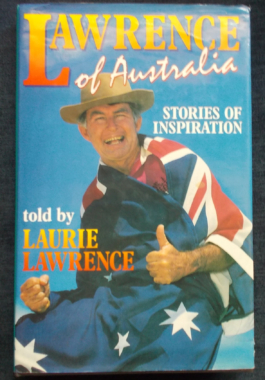-
 It takes more than a fit of the vapours for a giant airline to ground a multimillion-dollar jumbo jet. What investigative writer John Fuller stumbled upon was a jet-age ghost story – crews refused to fly the plane because of the recurring apparitions of a dead pilot and flight engineer from a crashed sister ship. It was the famed Lockheed Tristar; the first jumbo jet ever to crash, in the Florida Everglades, with the loss of 101 persons. In his investigation, Fuller is led inexorably to repeated eyewitness experiences of the dead men’s reappearances before flight crews. After a classic reconstruction of the mysterious crash itself, he interviews scores of airline flight personnel and explores every facet of every “ghost” report. A confirmed skeptic who has always written with professional thoroughness on both scientific and life subjects, Fuller uncovers startling evidence of contact with the spirit of the dead flight engineer Don Repo. It is a spine-tingling, persuasive account with implications of spiritual realities that are of increasing interest in today’s world of ever more extraordinary scientific breakthroughs.
It takes more than a fit of the vapours for a giant airline to ground a multimillion-dollar jumbo jet. What investigative writer John Fuller stumbled upon was a jet-age ghost story – crews refused to fly the plane because of the recurring apparitions of a dead pilot and flight engineer from a crashed sister ship. It was the famed Lockheed Tristar; the first jumbo jet ever to crash, in the Florida Everglades, with the loss of 101 persons. In his investigation, Fuller is led inexorably to repeated eyewitness experiences of the dead men’s reappearances before flight crews. After a classic reconstruction of the mysterious crash itself, he interviews scores of airline flight personnel and explores every facet of every “ghost” report. A confirmed skeptic who has always written with professional thoroughness on both scientific and life subjects, Fuller uncovers startling evidence of contact with the spirit of the dead flight engineer Don Repo. It is a spine-tingling, persuasive account with implications of spiritual realities that are of increasing interest in today’s world of ever more extraordinary scientific breakthroughs. -
 Into the hard-living world of travelling shearers in the Australian outback comes internationally acclaimed writer Roger McDonald, driving an old truck rattling with cooking gear. He has abandoned writing for a time and found work as a cook for a team of New Zealand shearers working through New South Wales, South Australia and Victoria. He is determined to find a sense of belonging: somehow to join his life with the landscape, the places and the people he meets along the way; somehow to fill the inexpressible yearning he feels. This is the story of that quest, of its triumphs and its failures - a story told with a heartfelt sense of of the profundity of ordinary lives. Written with an insider's affection and familiarity sharpened by an outsider's perception, this moving account of working life in a classic Australian industry gives a new twist to a long tradition of outback travel writing.
Into the hard-living world of travelling shearers in the Australian outback comes internationally acclaimed writer Roger McDonald, driving an old truck rattling with cooking gear. He has abandoned writing for a time and found work as a cook for a team of New Zealand shearers working through New South Wales, South Australia and Victoria. He is determined to find a sense of belonging: somehow to join his life with the landscape, the places and the people he meets along the way; somehow to fill the inexpressible yearning he feels. This is the story of that quest, of its triumphs and its failures - a story told with a heartfelt sense of of the profundity of ordinary lives. Written with an insider's affection and familiarity sharpened by an outsider's perception, this moving account of working life in a classic Australian industry gives a new twist to a long tradition of outback travel writing. -
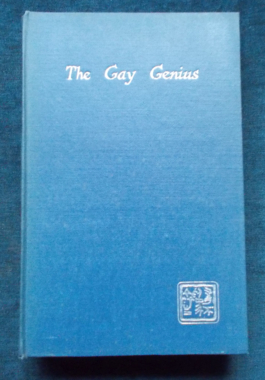

The Gay Genius: Lin Yutang
$65.00The biography of Su Tungpo, the celebrated and famous philosopher, poet, artist, government official and gourmand of 10th century China. He was a product of a centuries-old social system - a member of the literati. Taught to absorb the classics of Chinese literature at a young age, he rose to prominence by his remarkable performance at the national examinations, the entry point into a life of participation in the upper levels of the Chinese government. He was outspoken in his criticism of corrupt practices of government officials. From the book: ...an incorrigible optimist, a great humanitarian, a friend of the people, a prose master, an original painter, a great calligraphist, an experimenter in wine making, an engineer, a hater of puritanism, a yogi, a Buddhist believer, a Confucian statesman, a secretary to the emperor, a confirmed winebibber, a humane judge, a dissenter in politics, a prowler in the moonlight, a poet, and a wag. He sounds like someone we'd all love to know. Illustrated with black and white photographs of truly beautiful Chinese art of the period.
-
 Augustus and his brothers Francis and Henry left Yule's Station (60 miles north-east of Perth) on August 7, 1846 with four horses and seven weeks' provisions and explored a considerable amount of the country north of Perth. The party returned after 47 days, having covered 953 miles. Two years later there was an expedition to examine the course of the Gascoyne River in order to find good pasture land; further explorations followed during his time as Assistant Surveyor of Western Australia. In 1857 he also led a party in a search for traces of Ludwig Leichhardt, a fellow explorer who had disappeared. Both Augustus and his brother were presented with gold medals by the Royal Geographical Society. This facsimile reprint of the 1884 original is a fascinating diary of their adventures and explorations.
Augustus and his brothers Francis and Henry left Yule's Station (60 miles north-east of Perth) on August 7, 1846 with four horses and seven weeks' provisions and explored a considerable amount of the country north of Perth. The party returned after 47 days, having covered 953 miles. Two years later there was an expedition to examine the course of the Gascoyne River in order to find good pasture land; further explorations followed during his time as Assistant Surveyor of Western Australia. In 1857 he also led a party in a search for traces of Ludwig Leichhardt, a fellow explorer who had disappeared. Both Augustus and his brother were presented with gold medals by the Royal Geographical Society. This facsimile reprint of the 1884 original is a fascinating diary of their adventures and explorations. -
 This book deals with the many facets of fire control and fire behaviour and is written particularly for the great army of volunteer bushfire brigade members, without whom rural fire control in this country would be in a sorry state. Although it draws on some 30 - 40 years of Australian fire research experience, it is written in simple terms for ready absorption of the information contained therein. The chapter written on safety and survival was written by a medical man who is an active member of a volunteer fire brigade. There are sections on combustion, fuel, fire behaviour and fire effects as well as legislation, organisation and suppression problems unique to each State and Territory. Illustrated with colour and black and white photographs.
This book deals with the many facets of fire control and fire behaviour and is written particularly for the great army of volunteer bushfire brigade members, without whom rural fire control in this country would be in a sorry state. Although it draws on some 30 - 40 years of Australian fire research experience, it is written in simple terms for ready absorption of the information contained therein. The chapter written on safety and survival was written by a medical man who is an active member of a volunteer fire brigade. There are sections on combustion, fuel, fire behaviour and fire effects as well as legislation, organisation and suppression problems unique to each State and Territory. Illustrated with colour and black and white photographs. -

The Great Fletch: Hugh Lunn
$30.00When a passing French tennis superstar gave the young Ken Fletcher his tennis racquet, he didn't know what he'd started. Ken, a lonely only child with an irrepressible spirit, took the racquet, which was far too too big for him, tucked its handle under his armpit and began to bang the ball against a board in this back garden, using his whole body to get behind the ball. The result was a perfect, stunning forehand. Annersley Junction was more than a bit surprised when young Ken was seeded Number 3 at Wimbledon and won a Grand Slam with that forehand, used to devastating effect. Ken went on to lead a life of dazzling glamour: casinos,chauffeur-driven cars, beautiful women and applauding crowds. Hugh Lunn explores how a boy from Annesley Junction turned into a champion tennis player, and with his trademark humour and style he not only brings us the life of a sporting great, he describes a picture of a more innocent time in Australian history. -
 A fabulous chunk of Australiana in this wide selection of anecdotes compiled by John Laws and Christopher Stewart that ranges through Australia's history: from the First Fleet to the rock 'n' roll of the 1950s, these are fascinating stories that detail the people and events that helped shape the Australian legend. There's heroism, perseverance, strange coincidences genius, tragedy and warfare. And with every tale, no matter how well-known - there was always a little more to it.
A fabulous chunk of Australiana in this wide selection of anecdotes compiled by John Laws and Christopher Stewart that ranges through Australia's history: from the First Fleet to the rock 'n' roll of the 1950s, these are fascinating stories that detail the people and events that helped shape the Australian legend. There's heroism, perseverance, strange coincidences genius, tragedy and warfare. And with every tale, no matter how well-known - there was always a little more to it. -

The clients of the Skeldale House vet. practice vary from dour farmers who expect miracles for nothing, those grateful for any little service and for James Herriot, the real five star owners and patients like Mrs. Pumphrey and Tricki Woo. Here are animal characters from cart horses to kittens; a dog whose staple diet is fish and chips, a cat who presides over his master's business and cows and ewes with complicated calvings and lambings. Siegfried and James are compelled to take on assistants, one of whom - Calum Buchanan - has a larger than life personality with a magical touch, and a menagerie of his own that includes badgers, dogs, owls and foxcubs who take up residence in the kitchen. James' wife Helen is there, steering him through the often comic crises with serene practicality, as well as his children Jimmy and Rosie, both determined to follow in their father's footsteps. A book for anyone who loves animals and laughter. Illustrated by Victor Ambrus.
-
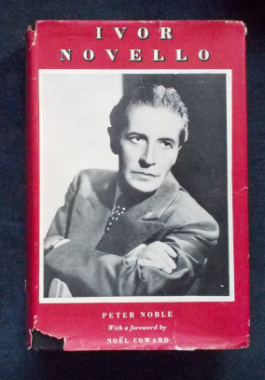
Ivor Novello: Peter Noble
$12.00Welsh actor, dramatist, singer and composer who became one of the most popular British entertainers of the first half of the 20th century. Ivor Novello's sudden death on March 6, 1951 was a blow to the English theatre and a tragedy felt by people the world over. This biography was written with his complete co-operation and is not only an account of a fabulous career but a warm study of personality containing many glimpses of the British stage over fifty years. Among Novello's well-known songs are Keep the Home Fires Burning, Fold Your Wings, Shine Through My Dreams and Rose of England. After World War I he wrote successfully for musical comedy and revue and built a silent film career on the strength of one publicity photograph. He dominated the British musical theatre from the mid-1930s until 1950. His sudden death came two hours after he had performed in the stage play of King's Rhapsody. Illustrated with black and white archival photographs. -


Ward was a leading player in the Profumo scandal which brought down the Conservative Government 1962. An osteopath and accomplished artist, he was a mover, mixer, stirrer and shaker in upper class circles, mixing with peers and prostitutes singly and together. He was a great name dropper. He had a plausible manner and tons of charm. He was friendly with Captain Ivanov, the Russian Naval attache who was conducting an affair with model Christine Keeler, a friend of Ward's, at the time she was involved in an affair with John Profumo, Minister for War. News of this potentially dangerous tangled involvement reached the ears of the Cabinet Secretary, who had a word with Profumo and the affair ended. The matter may have concluded there, but for Ward's continued association with Ivanov - and his love of playing at politics which brought about his own destruction. Illustrated with black and white photographs. The author was refused a copy of a full or partial transcript by the Court of Criminal Appeal but was able to obtain a transcript through the Press Association.
-
 An original, meticulously researched and riveting study that re-examines the Salem Witchcraft hysteria. In 1692 the people of Massachusetts were living in fear and not solely of satanic afflictions. Horrifyingly violent Indian attacks had all but emptied the northern frontier of settlers, and many traumatized refugees - including the main accusers of witches - had fled to communities like Salem. Meanwhile the colony’s leaders, defensive about their own failure to protect the frontier, pondered how God’s people could be suffering at the hands of savages. Struck by the similarities between what the refugees had witnessed and what the witchcraft “victims” described, many were quick to see a vast conspiracy of the Devil (in league with the French and the Indians) threatening New England on all sides. By providing this essential context to the famous events, and by casting a net well beyond the borders of Salem itself, new light has been shed on one of the most perplexing and fascinating periods in history.
An original, meticulously researched and riveting study that re-examines the Salem Witchcraft hysteria. In 1692 the people of Massachusetts were living in fear and not solely of satanic afflictions. Horrifyingly violent Indian attacks had all but emptied the northern frontier of settlers, and many traumatized refugees - including the main accusers of witches - had fled to communities like Salem. Meanwhile the colony’s leaders, defensive about their own failure to protect the frontier, pondered how God’s people could be suffering at the hands of savages. Struck by the similarities between what the refugees had witnessed and what the witchcraft “victims” described, many were quick to see a vast conspiracy of the Devil (in league with the French and the Indians) threatening New England on all sides. By providing this essential context to the famous events, and by casting a net well beyond the borders of Salem itself, new light has been shed on one of the most perplexing and fascinating periods in history. -
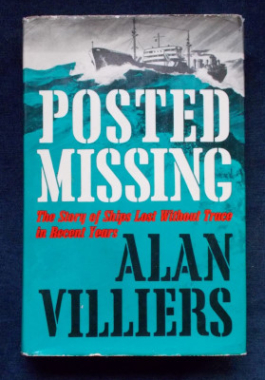 Every year at least one large, well-founded ship and a number of smaller ones are posted missing at Lloyds - from the 20,000 ton Brazilian battleship São Paulo which vanished off the Azores in 1951 down to trawlers like the Kingston Peridot and the St. Romanus. In the interests of research, Commander Villiers has visited the ports from which many of these vanished ships sailed and has had access to official reports and findings. In the new introduction to this edition, he mentions that despite sophisticated communications and efficient methods of sea rescue, seventy merchantmen were posted missing between 1965 - 1975. An authoritative and fascinating book that demonstrates that even now, the oceans still hold enigmas. Illustrated with maps and black and white photographs.
Every year at least one large, well-founded ship and a number of smaller ones are posted missing at Lloyds - from the 20,000 ton Brazilian battleship São Paulo which vanished off the Azores in 1951 down to trawlers like the Kingston Peridot and the St. Romanus. In the interests of research, Commander Villiers has visited the ports from which many of these vanished ships sailed and has had access to official reports and findings. In the new introduction to this edition, he mentions that despite sophisticated communications and efficient methods of sea rescue, seventy merchantmen were posted missing between 1965 - 1975. An authoritative and fascinating book that demonstrates that even now, the oceans still hold enigmas. Illustrated with maps and black and white photographs. -

In 1931, Charlie Chaplin's film City Lights turned 20-year-old newcomer Virginia Cherril into the most famous girl in the world. She went on to become the adored first wife who broke Cary Grant's heart when she left him; she turned down the very eligible Maharajah of Jaipur to befriend his Indian wife; and in the 1940s she became the Countess of Jersey. All that eluded her was love. And when she found it, she gave up everything she had to marry a handsome, Polish flying ace whose dream it was to become a cowboy. Illustrated with black and white photographs.
-
 The lives of the hardy mountain cattlemen of Victoria Alpine Country revolve around the annual Muster held before the first snowfall of Autumn when they bring the cattle down to lower pastures for winter feeding or consign them to auction at the annual calf sales. The resourcefulness and of the Mountain cattlemen shows n the way they meet all trials and tribulations - bushfire, floods and snow storms - not to mention their skill at tall tales! It's a close knit community and always has been - it's a hard life and not one of them would change it. Illustrated with black and white and colour photographs.
The lives of the hardy mountain cattlemen of Victoria Alpine Country revolve around the annual Muster held before the first snowfall of Autumn when they bring the cattle down to lower pastures for winter feeding or consign them to auction at the annual calf sales. The resourcefulness and of the Mountain cattlemen shows n the way they meet all trials and tribulations - bushfire, floods and snow storms - not to mention their skill at tall tales! It's a close knit community and always has been - it's a hard life and not one of them would change it. Illustrated with black and white and colour photographs. -
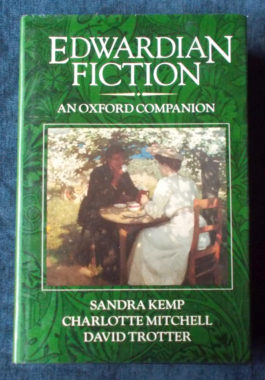 The Edwardian period was a great age for English fiction. Many classic novels were first published then - Conan Doyle's The Hound of the Baskervilles and The Lost World; E. M. Forster's A Room with a View and Howard's End; Conrad's Lord Jim and Nostromo; for children, Frances Hodgson Burnett's The Secret Garden and A Little Princess and Kipling's Puck of Pook's Hill and Just So Stories; the first of Galsworthy's Forsyte novels, The Man of Property; Erskine Childers's great spy story The Riddle of the Sands; Arnold Bennett's Clayhanger, Baroness Orczy's The Scarlet Pimpernel, D. H. Lawrence's Sons and Lovers. But alongside these there was a wealth of other writing, much of it forgotten or half-forgotten, some of it unjustly neglected, and all of it important to the literary context in which the enduringly popular works were produced. This Companion examines the broad sweep of fiction-writing from 1900 to the outbreak of the First World War - a time when novels in Britain were produced more cheaply, and read more widely, than ever before. There's over 800 author-entries as well as articles on individual books, literary periodicals and general topics. With the new century came fiction from new sources, which explored new subjects and was read by new audiences. An unprecedented number of women began to publish - they represent nearly half the author-entries here - though many of them chose to do so under noms de plume. Genres such as spy stories, Ruritanian romance and detective fiction were invented or suddenly came into their own, each with its following of readers. Significant social developments and themes can be traced both in the Companion at large and via the topic entries, which for the first time allow readers to explore all the novels in a particular genre.
The Edwardian period was a great age for English fiction. Many classic novels were first published then - Conan Doyle's The Hound of the Baskervilles and The Lost World; E. M. Forster's A Room with a View and Howard's End; Conrad's Lord Jim and Nostromo; for children, Frances Hodgson Burnett's The Secret Garden and A Little Princess and Kipling's Puck of Pook's Hill and Just So Stories; the first of Galsworthy's Forsyte novels, The Man of Property; Erskine Childers's great spy story The Riddle of the Sands; Arnold Bennett's Clayhanger, Baroness Orczy's The Scarlet Pimpernel, D. H. Lawrence's Sons and Lovers. But alongside these there was a wealth of other writing, much of it forgotten or half-forgotten, some of it unjustly neglected, and all of it important to the literary context in which the enduringly popular works were produced. This Companion examines the broad sweep of fiction-writing from 1900 to the outbreak of the First World War - a time when novels in Britain were produced more cheaply, and read more widely, than ever before. There's over 800 author-entries as well as articles on individual books, literary periodicals and general topics. With the new century came fiction from new sources, which explored new subjects and was read by new audiences. An unprecedented number of women began to publish - they represent nearly half the author-entries here - though many of them chose to do so under noms de plume. Genres such as spy stories, Ruritanian romance and detective fiction were invented or suddenly came into their own, each with its following of readers. Significant social developments and themes can be traced both in the Companion at large and via the topic entries, which for the first time allow readers to explore all the novels in a particular genre. -
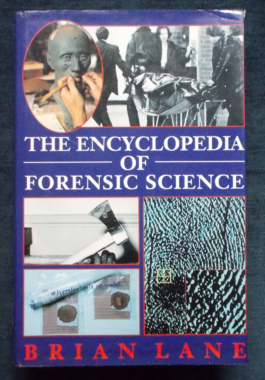 Soaring crime rates have made forensic science an increasingly important factor in crime detection. In this comprehensive study, Brian Lane looks at the different techniques of forensic science and demonstrates how they are used by means of real-life case studies. Most books on forensic science tend to fall into two main categories: either they are textbooks for the scientifically educated and trained, or they are popular compilations for anecdotes and stories, seasoned with scientific information from the textbooks. This encyclopedia demystifies some of the minor miracles that are occurring in scientific detection today and places them in an historical context. Drawn from many sources and the expert knowledge of numerous consultants, the book provides a wealth of information on subjects from Acid to Voice prints. A companion book with for interested criminologists and fans of detective fiction - from arsenic to voice prints via bloodstains, carbon dating, facial reconstruction, DNA profiling and much more. Illustrated in black and white.
Soaring crime rates have made forensic science an increasingly important factor in crime detection. In this comprehensive study, Brian Lane looks at the different techniques of forensic science and demonstrates how they are used by means of real-life case studies. Most books on forensic science tend to fall into two main categories: either they are textbooks for the scientifically educated and trained, or they are popular compilations for anecdotes and stories, seasoned with scientific information from the textbooks. This encyclopedia demystifies some of the minor miracles that are occurring in scientific detection today and places them in an historical context. Drawn from many sources and the expert knowledge of numerous consultants, the book provides a wealth of information on subjects from Acid to Voice prints. A companion book with for interested criminologists and fans of detective fiction - from arsenic to voice prints via bloodstains, carbon dating, facial reconstruction, DNA profiling and much more. Illustrated in black and white. -

 The true story of the man who pioneered the Flying Doctors and Bush Hospitals of Australia in the early 1900's. Ever the dreamer, Flynn did not rest until his dream of saving lives in the bush was realised through a revolutionary new system of using light aeroplanes as ambulances to help overcome the problems of distance in the huge Australian Outback. With black and white photographs.
The true story of the man who pioneered the Flying Doctors and Bush Hospitals of Australia in the early 1900's. Ever the dreamer, Flynn did not rest until his dream of saving lives in the bush was realised through a revolutionary new system of using light aeroplanes as ambulances to help overcome the problems of distance in the huge Australian Outback. With black and white photographs. -
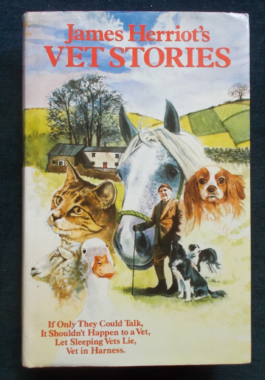 This fabulous omnibus volume contains: If Only The Could Talk: When the newly qualified vet James Herriot, arrives in the small Yorkshire village of Darrowby in 1937, he has no idea of the new friends he will meet or adventures that lie ahead. It's not long before he's swept into the Darrowby life - all the toughness and humour; and the joys and heartbreaks. It Shouldn't Happen To A Vet: How on earth did James Herriot come to be sitting on a high Yorkshire moor, smelling vaguely of cows? James isn't sure, but he knows that he loves it. This second hilarious volume of memoirs contains more tales of James' unpredictable boss Siegfried Farnon, his charming student brother Tristan, animal mayhem galore and his first encounters with a beautiful girl called Helen. Let Sleeping Vets Lie: With two years experience behind him, James Herriot still feels privileged working on the beautiful Yorkshire moors as assistant vet at the Darrowby practice. Time to meet yet more unwilling patients and a rich cast of supporting owners. Full of hilarious tales of the cantankerous Siegfreid, his charming student brother Tristan, the joys of spring lambing, a vicious cat called Boris and James' jinxed courtship of the lovely Helen. Vet In Harness: The Yorkshire dales have never seemed more beautiful for James - he has a lovely wife by his side, a partner's plate on the gate and the usual menagerie of farm animals, pets and owners demanding his constant attention and teaching him a few lessons along the way. All of the old Darrowby friends are on top form - Siegfried thrashes round the practice, Tristan occasionally buckles down for finals and James is signed up for a local cricket team. There's all the regulars too - such as Mrs Pumphrey's Pekinese Tricki Woo, and Gertrude the beer-swilling pig. Timeless tales from an era now regrettably gone for ever.
This fabulous omnibus volume contains: If Only The Could Talk: When the newly qualified vet James Herriot, arrives in the small Yorkshire village of Darrowby in 1937, he has no idea of the new friends he will meet or adventures that lie ahead. It's not long before he's swept into the Darrowby life - all the toughness and humour; and the joys and heartbreaks. It Shouldn't Happen To A Vet: How on earth did James Herriot come to be sitting on a high Yorkshire moor, smelling vaguely of cows? James isn't sure, but he knows that he loves it. This second hilarious volume of memoirs contains more tales of James' unpredictable boss Siegfried Farnon, his charming student brother Tristan, animal mayhem galore and his first encounters with a beautiful girl called Helen. Let Sleeping Vets Lie: With two years experience behind him, James Herriot still feels privileged working on the beautiful Yorkshire moors as assistant vet at the Darrowby practice. Time to meet yet more unwilling patients and a rich cast of supporting owners. Full of hilarious tales of the cantankerous Siegfreid, his charming student brother Tristan, the joys of spring lambing, a vicious cat called Boris and James' jinxed courtship of the lovely Helen. Vet In Harness: The Yorkshire dales have never seemed more beautiful for James - he has a lovely wife by his side, a partner's plate on the gate and the usual menagerie of farm animals, pets and owners demanding his constant attention and teaching him a few lessons along the way. All of the old Darrowby friends are on top form - Siegfried thrashes round the practice, Tristan occasionally buckles down for finals and James is signed up for a local cricket team. There's all the regulars too - such as Mrs Pumphrey's Pekinese Tricki Woo, and Gertrude the beer-swilling pig. Timeless tales from an era now regrettably gone for ever. -
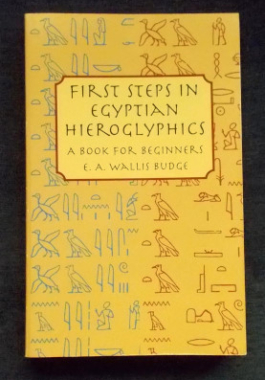 The dearth of suitable introductory texts presents a serious obstacle to the study of the Egyptian language, so this practical grammar answers a longstanding need. Its well-known and highly respected author, a Keeper of the Egyptian and Assyrian Antiquities at the British Museum, has written many other popular Dover books on Egyptology. Contents include lists of frequently used signs and determinatives, a short vocabulary of about 500 words, a series of 31 texts and extracts (with interlinear transliteration and word-for-word translation), and a few untransliterated and untranslated texts (with glossary), to be worked out independently. This is a valuable book for archaeologists, anthropologists, and anyone with a professional or amateur interest in Ancient Egypt.
The dearth of suitable introductory texts presents a serious obstacle to the study of the Egyptian language, so this practical grammar answers a longstanding need. Its well-known and highly respected author, a Keeper of the Egyptian and Assyrian Antiquities at the British Museum, has written many other popular Dover books on Egyptology. Contents include lists of frequently used signs and determinatives, a short vocabulary of about 500 words, a series of 31 texts and extracts (with interlinear transliteration and word-for-word translation), and a few untransliterated and untranslated texts (with glossary), to be worked out independently. This is a valuable book for archaeologists, anthropologists, and anyone with a professional or amateur interest in Ancient Egypt. -
 The frank, honest and heartbreaking true story of parents faced with the unimaginable—a terminal diagnosis for their young adopted daughter. What follows is an extraordinary tale of sacrifice, resilience, and the power of love to overcome. Jia-Mei was the child Sharon Guest and Stuart Neal had always wanted and, following a protracted adoption process, they excitedly traveled to China to collect her from a Chinese orphanage. Friends and family affectionately called her Jessie Mei Mei and welcomed her to a new life in Australia. Jessie was the perfect eighteen-month-old child—gregarious and funny and easy to love. But, from the beginning, Sharon, in that way that parents do, suspected something wasn't quite right about Jessie. She was too serious and immobile and learned quite slowly. When they adopt Bi Bi, another Chinese baby, Jessie's behavior worries them so much that they seek medical help only to hear what no parent is ever prepared to hear—their beautiful daughter has a degenerative condition that means she will be lucky to see her twelfth birthday. What happens next is the all too common and shocking story of how a country as rich as Australia shamefully fails to provide assistance to families in need. The bureaucratic silliness of government departments and their systemic inadequacy in supporting high needs children and adults leads to extreme actions on the part of their exhausted families. Illustrated with colour photographs.
The frank, honest and heartbreaking true story of parents faced with the unimaginable—a terminal diagnosis for their young adopted daughter. What follows is an extraordinary tale of sacrifice, resilience, and the power of love to overcome. Jia-Mei was the child Sharon Guest and Stuart Neal had always wanted and, following a protracted adoption process, they excitedly traveled to China to collect her from a Chinese orphanage. Friends and family affectionately called her Jessie Mei Mei and welcomed her to a new life in Australia. Jessie was the perfect eighteen-month-old child—gregarious and funny and easy to love. But, from the beginning, Sharon, in that way that parents do, suspected something wasn't quite right about Jessie. She was too serious and immobile and learned quite slowly. When they adopt Bi Bi, another Chinese baby, Jessie's behavior worries them so much that they seek medical help only to hear what no parent is ever prepared to hear—their beautiful daughter has a degenerative condition that means she will be lucky to see her twelfth birthday. What happens next is the all too common and shocking story of how a country as rich as Australia shamefully fails to provide assistance to families in need. The bureaucratic silliness of government departments and their systemic inadequacy in supporting high needs children and adults leads to extreme actions on the part of their exhausted families. Illustrated with colour photographs. -
 An incredible voyage of discovery from the frozen summit of Ben Nevis to the white sands of the Isle of Scilly; and from the rain-drenched tip of western Ireland to the dry expanses of East Anglia. Alan descends a Yorkshire waterfall twice as tall as Niagara Falls, climbs one of the highest mountains in Scotland, forages with red squirrels in Formby, takes a trip back in time to find hippos roaming Trafalgar Square, a huge forest from Land's End to John O'Groats and prehistoric reptiles paddling Britain's tropical seas. Here is the evolution of the British landscape and wildlife through dramataic geological, cliatic and human change, and an examination of the land today with fresh challenges and responsibilities for us to face.
An incredible voyage of discovery from the frozen summit of Ben Nevis to the white sands of the Isle of Scilly; and from the rain-drenched tip of western Ireland to the dry expanses of East Anglia. Alan descends a Yorkshire waterfall twice as tall as Niagara Falls, climbs one of the highest mountains in Scotland, forages with red squirrels in Formby, takes a trip back in time to find hippos roaming Trafalgar Square, a huge forest from Land's End to John O'Groats and prehistoric reptiles paddling Britain's tropical seas. Here is the evolution of the British landscape and wildlife through dramataic geological, cliatic and human change, and an examination of the land today with fresh challenges and responsibilities for us to face. -
 Leonard Nimoy's memoir of a fascinating career - and the strange, wonderful, complicated relationship he had with his alter-ego, Spock and the phenomenon that is Star Trek. From the earliest days in the creation of the Star Trek Universe, when NBC executives told Gene Roddenberry to 'drop the Martian', through to his performance as Mr. Spock on a two part episode of The Next Generation this book tells the full inside story of Leonard Nimoy's long and intense association with Star Trek, in front of and behind the camera.
Leonard Nimoy's memoir of a fascinating career - and the strange, wonderful, complicated relationship he had with his alter-ego, Spock and the phenomenon that is Star Trek. From the earliest days in the creation of the Star Trek Universe, when NBC executives told Gene Roddenberry to 'drop the Martian', through to his performance as Mr. Spock on a two part episode of The Next Generation this book tells the full inside story of Leonard Nimoy's long and intense association with Star Trek, in front of and behind the camera. -

Goldwyn: Arthur Marx
$15.00The incredible tale of Samuel Goldwyn, who emigrated alone to America as a teenager, became a glove salesmen and then made his way to the top of the fledgling film industry by some very questionable ways and means. Did he really ask David O. Selznick, "So, who've you got to play Scarface O'Hara?" And did he really believe that 'a verbal contract wasn't worth the paper it's printed on'? Arthur Marx shows us a Goldwyn who was a highly complex and puzzling individual. He supplies in abundance more famous Goldwynisms - and a good many stories printed here for the first time. Rich in anecdotal detail about both Goldwyn’s personal and professional life, this biography is a testament to his role as both a perfectionist in art and a founder of one of America’s great industries. The author is the son of Groucho Marx and thus had access to many of those mentioned in this biography. -
 'We're happy little Vegemites, as bright as bright can be...' Who remembers Vegemite sandwiches in their school lunch boxes? Or, when you felt a bit crook, Vegemite on Sao biscuits to settle your stomach? Generations of Aussie kids have been raised on Vegemite. In 1992, Kraft produced the 70th Happy Birthday Vegemite book, full of games, memorabilia, recipes, advertisement and facts all about Vegemite. V not only stood for Vegemite - it stood for vitamins and vitality, vim and vigor!
'We're happy little Vegemites, as bright as bright can be...' Who remembers Vegemite sandwiches in their school lunch boxes? Or, when you felt a bit crook, Vegemite on Sao biscuits to settle your stomach? Generations of Aussie kids have been raised on Vegemite. In 1992, Kraft produced the 70th Happy Birthday Vegemite book, full of games, memorabilia, recipes, advertisement and facts all about Vegemite. V not only stood for Vegemite - it stood for vitamins and vitality, vim and vigor! -
 Empires remain alive in our minds by dint of the great works they achieve. And the Roman empire is still the world's preceptor in politics, law, administration and the art of war. Her legal advisors laid the foundations of justice and morals in society; her municipal system has handed down criteria of administration still in use today. The Romans built triumphal arches, the domed Pantheon, aqueducts, circuses and amphitheatres for their captains, the needs of their empire and the pleasure of their great cities, in addition to their military roads which spread their will to the ends of the earth. They also created the Coliseum and the Thermal Baths of Caracella, so majestic they can be taken as a symbol of Roman dominion. The scandal of Roman orgies surpassed anything that had been seen in the Orient; Latin is the parent of many modern languages; and for Cicero, Seneca and Tacitus, the most imperious need was the free possession of the self. With colour and blak and white photographs and artistic representations of events, places and people.
Empires remain alive in our minds by dint of the great works they achieve. And the Roman empire is still the world's preceptor in politics, law, administration and the art of war. Her legal advisors laid the foundations of justice and morals in society; her municipal system has handed down criteria of administration still in use today. The Romans built triumphal arches, the domed Pantheon, aqueducts, circuses and amphitheatres for their captains, the needs of their empire and the pleasure of their great cities, in addition to their military roads which spread their will to the ends of the earth. They also created the Coliseum and the Thermal Baths of Caracella, so majestic they can be taken as a symbol of Roman dominion. The scandal of Roman orgies surpassed anything that had been seen in the Orient; Latin is the parent of many modern languages; and for Cicero, Seneca and Tacitus, the most imperious need was the free possession of the self. With colour and blak and white photographs and artistic representations of events, places and people. -

 The story of a nation: on the 1st day of the 20th century, the Commonwealth of Australia came into being. Drawing on sources as diverse as Alfred Deakin's notebooks, Nettie Palmer's letters and the diary of a bank clerk named George M'Clure, Souter describes the birth of such Commonwealth institutions and symbols as parliament, the high court, the army and navy, the flag, income tax, the coat of arms and Canberra. There are lively narrative portraits of the young Commonwealth's great public figures: Barton, Reid, O'Malley, Griffith, Isaacs, Fisher, Hughes, Mannix and Monash - as well as Tom Thick, a telegram boy in western Victoria; Ida Dawson, a governess at a homestead near Collarenebri; Shaw Neilson, a Wimmera bush worker and poet; and Snowy Howe, a young pearler who went from Broome to Gallipoli.There is a wide panorama from the South African Veldt to the Somme for the first Empire Day in 1905 to the slaughter of Gallipoli, from leisurely Edwardian cruises 'home' to Ross Smith's extraordinary London-Melbourne flight in 1919. This is the initiation of Australia.
The story of a nation: on the 1st day of the 20th century, the Commonwealth of Australia came into being. Drawing on sources as diverse as Alfred Deakin's notebooks, Nettie Palmer's letters and the diary of a bank clerk named George M'Clure, Souter describes the birth of such Commonwealth institutions and symbols as parliament, the high court, the army and navy, the flag, income tax, the coat of arms and Canberra. There are lively narrative portraits of the young Commonwealth's great public figures: Barton, Reid, O'Malley, Griffith, Isaacs, Fisher, Hughes, Mannix and Monash - as well as Tom Thick, a telegram boy in western Victoria; Ida Dawson, a governess at a homestead near Collarenebri; Shaw Neilson, a Wimmera bush worker and poet; and Snowy Howe, a young pearler who went from Broome to Gallipoli.There is a wide panorama from the South African Veldt to the Somme for the first Empire Day in 1905 to the slaughter of Gallipoli, from leisurely Edwardian cruises 'home' to Ross Smith's extraordinary London-Melbourne flight in 1919. This is the initiation of Australia.



